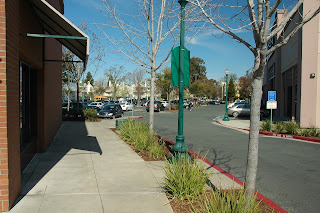 A loyal
reader (it’s a required duty for younger sisters) recently emailed me with a
question. She provided a link to a
National Public Radio story on the history of the Gateway Arch in St. Louis. She asked my thoughts on the question posed
by the article, whether a major amenity like the Gateway Arch justified the
removal of 40 blocks of aging urban fabric.
A loyal
reader (it’s a required duty for younger sisters) recently emailed me with a
question. She provided a link to a
National Public Radio story on the history of the Gateway Arch in St. Louis. She asked my thoughts on the question posed
by the article, whether a major amenity like the Gateway Arch justified the
removal of 40 blocks of aging urban fabric.
I don’t know
the entire history of the Gateway Arch, so my answer isn’t definitive. But based on what I know, my answer is “almost
assuredly not”. Although that doesn’t
mean that projects like the Gateway Arch are never justified.
How many
people lived in the demolition area and the relocations that were forced upon
them for the Gateway Arch are key variables in my answer. The era of the Arch was also the era of Robert
Moses.
And the era
of Robert Moses was the era of large housing projects. It was a time when we had convinced ourselves
that “towers in the park” were a better housing solution for lower income
people than the messy, urban streets on which they then lived. Time proved that the idea was deeply
flawed. And the shortcomings were
nowhere more evident than in St. Louis.
If the
relocations required for the Gateway Arch resulted in projects like
Pruitt-Igoe, then the Arch couldn’t have been justified. Even if the neighborhoods that were removed
for the Arch were raggedy and in need of work, they could never have been as poor
a living situation as the projects of St. Louis quickly became.
This isn’t
to deny that the Arch had value, both as a monument to civic spirit and as a tourist
attraction. Indeed, I rankle at the
description in the article of the Arch as non-utilitarian. Although some have more than others, virtually
every public work has some utility, whether in providing a place to enjoy
nature, attracting tourists, or carrying away sewage. But it’s nearly impossible to argue that the
value of the Arch could have exceeded the value of the neighborhoods lost.
But that
doesn’t mean that projects like the Arch can never be justified. Like so many decisions in the public realm, it’s
a matter of benefit and cost. Prepare
cautious, reasonable estimates of the likely benefits, such as the ticket sales
and increased tourism from the Gateway Arch.
Compare those to cautious, reasonable estimates of the cost of
relocations, including the value of severed social capital. And a benefit/cost decision can be made. And some projects will be justified. But probably not the Arch.
It’s much
like the discussion of sports stadiums that I put forth a few months back. Sports stadiums, and Gateway Arches, have
value. But proponents tend to exaggerate
the benefits, which leads to poor decision-making. And in the case of the Arch, I suspect that
proponents, seduced by the “tower in the park” vision of housing projects, also
underestimated the human costs.
Some may
question how I can call for people to make the best decisions with the
information at hand and also condemn the Gateway Arch relocations. Weren’t the public housing projects of the
time the best available concept? Is
there a difference between the conviction during the 1960s about the value of
public housing and my arguments of today about urbanism? Is it fair to condemn one in hindsight while
promoting the other?
But there is
a key difference between the “tower in the park” and urbanism. The tower in the park was a wholly invented
theory about how people should live. According to Tom Wolfe, it began in an act of revulsion
over the violence of World War I. It had
no basis in how people like to live.
On the other
hand, urbanism is very much about people really do live. It’s based in a look back as what land uses
worked well, before we were sidetracked by the tower in the park and its
successor theories. And that’s a huge
difference.
Is my
Gateway Arch answer definitive? Heck,
no. I’ve read little about the Arch, nor
have I visited it. I’ve never even set
foot in Missouri. But my sister asked an
interesting question and I answered as best I could with the knowledge I
have. If someone has a more informed
opinion, feel free to jump in. I’m
always willing to be educated.
As always,
your questions or comments will be appreciated.
Please comment below or email me.
And thanks for reading. - Dave Alden (davealden53@comcast.net)
(Note: Photo
is from the NPR article.)






















